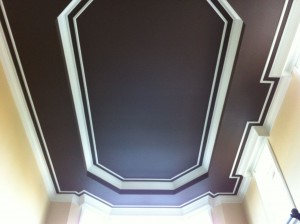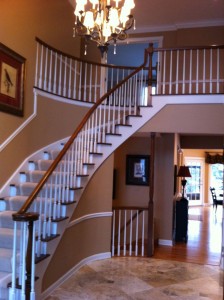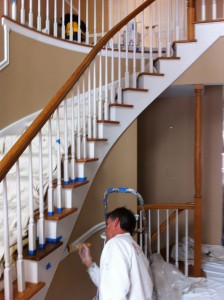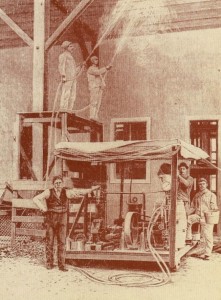When repainting a room, it makes sense to paint the ceiling at the same time as the walls, since the room is already masked off for the painting project. Most often, the ceiling gets painted a white or off-white color. The theory behind this approach to ceiling color selection is that a darker color has a tendency to make the ceiling appear lower and make the room smaller.
In many cases, the principle stated above has some validity, especially for light-colored walls. However, depending on the mood you want to create in the room, a color, even a darker color may be the right choice in order to create a warm and enveloping feeling. In other cases, when the room has high ceilings and abundant sunlight, a dark ceiling color can bring a room to life and add panache to a space.
In the past week, for a client in the Northwest suburbs of Chicago, we repainted a twenty-foot high tray ceiling, dressed with abundant crowns and moldings. The room was large and had five sets of two-story windows. The size of the room, combined with its height, made it appear somewhat cold and uninviting. Additionally, a light color on the ceiling caused the beautiful crowns and moldings to overly blend in. We painted the ceiling dark brown. The whole room came to life!
Making such a bold color choice can be made easier with the guiding eye of a color consultant. When doing interior painting, clients often hold themselves back in their color choices, for fear of making a mistake. A little color consultation goes a long way to embolden clients in making color selections that express their personality and create a nurturing environment for them.








 Follow
Follow



